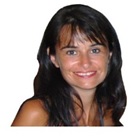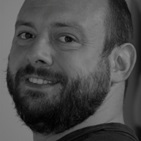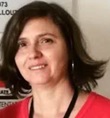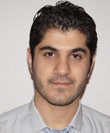Speakers
Sophie BARBE

Sophie Barbe received a PhD in Computational Structural Biology (2006) from the Ecole Normale Supérieure de Cachan. During her PhD thesis at the Laboratory of Biology and Applied Pharmacology (LBPA ENS Cachan), she specialized in molecular modelling of (macro)molecules to study structure-function relationships and guide the optimization of small molecules for therapeutic applications. She held a post-doctoral position (2006-2009) within the framework of an interdisciplinary project (associating the LAAS-CNRS, TBI, IPBS and ITOM-INSERM) focused on the development and the validation of new robotics-inspired methods for the efficient exploration of large-scale molecular motions occurring in different types of (macro)molecules. She joined the INRAE in 2009 as a Research Scientist and she was promoted to Research Director in 2020. She is currently working at Toulouse Biotechnology Institute in Toulouse. She leads research activities focused on the development and application of molecular modelling and molecular computational design methods and tools for investigating protein sequence-structure-dynamics-function relationships and guiding the engineering of new and optimized biomolecules for bio(nano)technologies and health.
Jérôme DE RUYCK

Jérôme obtained his PhD (2008) at the University of Namur, Belgium, working on the structure and inhibition of IPP isomerases. He then spent one year in the group of Prof. Poulter at the University of Utah (USA), where he worked on the structural depiction of IDI-2 from S. pneumoniae. After several postdoc positions in Belgium, he joined the Unité de Glycobiologie Structurale et Fonctionelle (UGSF) in 2016. He is now associate professor in the same institute working on and teaching molecular modelling of protein-protein and protein-carbohydrates interactions. His researches are mainly focused on Structure-Based Drug Design (SBDD) against cancer and inflammatory diseases.
Ann DETROYER
Dr. Ann Detroyer is a senior research scientist in the field of In Silico Modeling at L'Oréal R&I. Her work includes the development of QSAR models, the implementation and the improvement of computational tools to predict toxicological and physico-chemical effects of Cosmetics. In collaboration with L’Oréal's regulatory toxicologists and in vitro testing experts Ann is also involved in the construction of integrated (in silico/in vitro) alternative testing strategies to animal testing for various endpoints. After obtaining her Pharmacist degree, Ann has received her PhD in Pharmaceutical Sciences from the University of Brussels in 2003. Prior to joining L’Oréal at the end of 2004, she has been working with teams of Johnson & Johnson and of the Universities of Paris XI, Valencia and Brussels on developing computational and high-troughput screening methods in the field of Pharmaceutical and Biological Analysis.
Roman G. EFREMOV

Roman G. Efremov has graduated from the M.V. Lomonosov State University in 1986 with a Ph.D. in physics and mathematics, specialization molecular biophysics, on the bacterial and visual rhodospins chromophore binding sites probed via resonance Raman spectroscopy and quantum chemical calculations and was awarded a D. Sc. in 2000 for his work on the modelisation of membrane proteins. He has joined the M.M. Shemyakin & Yu.A. Ovchinnikov Institute of Bioorganic Chemistry where he has taken the head of the Molecular Modeling Group in 2001 then of the Laboratory of Biomolecular Modeling in 2007. His main research interests involve molecular biophysics, structural biology and membrane-protein interactions, explored among others by molecular dynamics to study the mechanisms behind protein functionality. He is the co-author of some 190 papers in peer-reviewed journals, one monograph, and several patents. He is also member of the editorial board or associate editor for 5 international journals. To conclude, he has also a long history of strong relationships with the universities of Lille and Reims.
Dragos HORVATH

Dragos Horvath graduated at the University Babes-Bolyai of Cluj-Napoca, Romania, before coming to France for a master at the University of Lille and following with a PhD defended in 1996. Before joining the CNR and the University of Strasbourg in 2003, he spent seven years working in the industry, at CEREP, where he led the molecular modeling department. His research interests are divided between the development of molecular modeling tools and applying them to cope with chemoinformatics and drug design challenges. He has co-authored some 80 articles.
Maria A. MITEVA

Maria A. Miteva has completed her PhD degree in 2000 in the Institute of Organic Chemistry, Bulgarian Academy of Science. She has been working in the fields of bioinformatics, chemoinformatics, drug discovery and toxicity prediction in Bulgaria, Sweden and France. She joined Inserm institute in France in 2005. Currently she is a Research Director at the Inserm Institute and co-director of the Inserm ERL lab U1268 “Medicinal chemistry and translational research” at UMR 8038 CNRS - University of Paris, the Faculty of Pharmacy. She is developing combined structure-based and machine learning approaches for prediction of drug-drug interactions and virtual screening. She published 97 scientific articles in peer-reviewed journals and 3 patents, and she edited a book “In silico lead discovery“ (Bentham Sci 2011). She is an appointed member of the editorial board of five international journals in the field of bioinformatics and drug design, and Associated Editor for BMC Pharmacology and Toxicology.
Weria PEZESHKIAN

Weria Pezeshkian achieved his phD in Bochum and Southern Denmark universities in 2015 in the field of biophysics. In 2018, he joined the team of Professor Marrink in Groningen. His research is to understand membrane-related biological processes using theoretical and computational approaches. These processes often span a wide range of time and length-scale. Therefore, he is using distinct simulation techniques, e.g., all-atom and coarse-grained molecular dynamics, dissipative particle dynamics, and dynamic triangulated surfaces simulations, through a multi-scale simulation scheme that he has developed.
